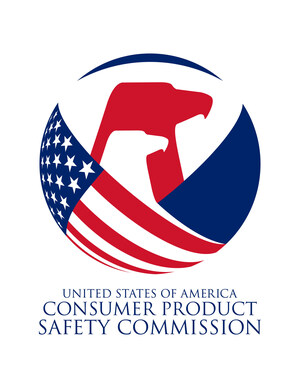WASHINGTON, Sept. 5, 2018 /PRNewswire/ -- If your baby could talk - -what would she/he say? Perhaps, "keep me warm and cuddly," "feed me, and change me" or "KEEP ME SAFE!" The U.S. Consumer Product Safety Commission (CPSC) is all about safety, especially when it comes to our little bundles of joy. That's why we are proud to recognize September as Baby Safety Month along with the Juvenile Products Manufacturers Association (JPMA) and other federal partners.
It's a fact that most injuries can be prevented, and parents and caregivers play a major role in making sure little ones stay safe. CPSC would like to help in this effort by focusing on four lifesaving themes for the month of September. Are you ready for some serious baby talk on safety?
Drowning is the leading cause of unintentional death for children ages one to four. CPSC Chairman Ann Marie Buerkle says, "we must do more to protect kids in the water."
- Never leave a child unattended in or near water.
- Install proper barriers, covers and alarms on and around your pool and spa.
- Teach children how to swim and learn CPR.
Drownings also happen in the home.
- Never leave a baby alone, or with young siblings, in a bathtub and always keep baby within arm's reach. Children can drown quickly and silently. Even in small amounts of water.
- Keep the toilet lid down and make sure all containers with liquids are emptied immediately after use.
Babies spend most of their time sleeping. Follow these tips to keep them safe while sleeping.
- Always place baby on back to sleep. This helps prevent suffocation and reduces SIDS.
- Keep pillows, quilts, comforters and cushions OUT of baby's crib, bassinet or play yard.
- Use a crib, play yard and bassinet that meet current CPSC standards.
- Use a firm, tightfitting mattress.
Cords can pose strangulation hazards to children, whether they are connected to window blinds baby monitors or lamps.
- Keep cords up and out of reach of children.
- Use cordless window coverings in all homes where children live or visit.
- Do not place cribs, beds and furniture close to the windows because children can climb on them and gain access to window blind cords.
- Remember to keep cribs at least three feet away from all cords that the child may reach while inside the crib.
CPSC urges parents of infants younger than four months of age, premature or low birth-weight babies, and babies with colds and respiratory problems to use extra caution and consult their pediatricians about using infant sling carriers. If you are using a sling:
- Make sure the infant's face is not covered and is visible at all times to the sling's wearer.
- Be vigilant about frequently checking your baby while in a sling, always making sure nothing is blocking baby's nose and mouth and that baby's chin is away from her chest.
- Avoid nursing baby in sling … If using it, change the baby's position after feeding so the baby's head is facing up and is clear of the sling and the mother's body.
Always check to see if any of your baby's nursery products have been recalled, that includes any second-hand products you may have. Remember, your little bundle wants you to "Keep me Safe!"
To mark Baby Safety Month, CPSC is collaborating with the Juvenile Products Manufacturers Association (JPMA). Their theme this year is "Choose and Use," which encourages consumers to always read and follow manufacturer's instructions and warning labels.
Visit CPSC's Crib Information Center at www.cpsc.gov/cribs for safe sleep resources available to parents.
See our 10 Tips to Keep Your Baby Safe video here.
You can also visit the Safe to Sleep® public education campaign led by The Eunice Kennedy Shriver National Institute of Child Health and Human Development (NICHD) of the National Institutes of Health (NIH) and in collaboration with other organizations.
CONTACT: Karla Crosswhite, 301-504-7908
SOURCE U.S. Consumer Product Safety Commission
Related Links
WANT YOUR COMPANY'S NEWS FEATURED ON PRNEWSWIRE.COM?
Newsrooms &
Influencers
Digital Media
Outlets
Journalists
Opted In





Share this article